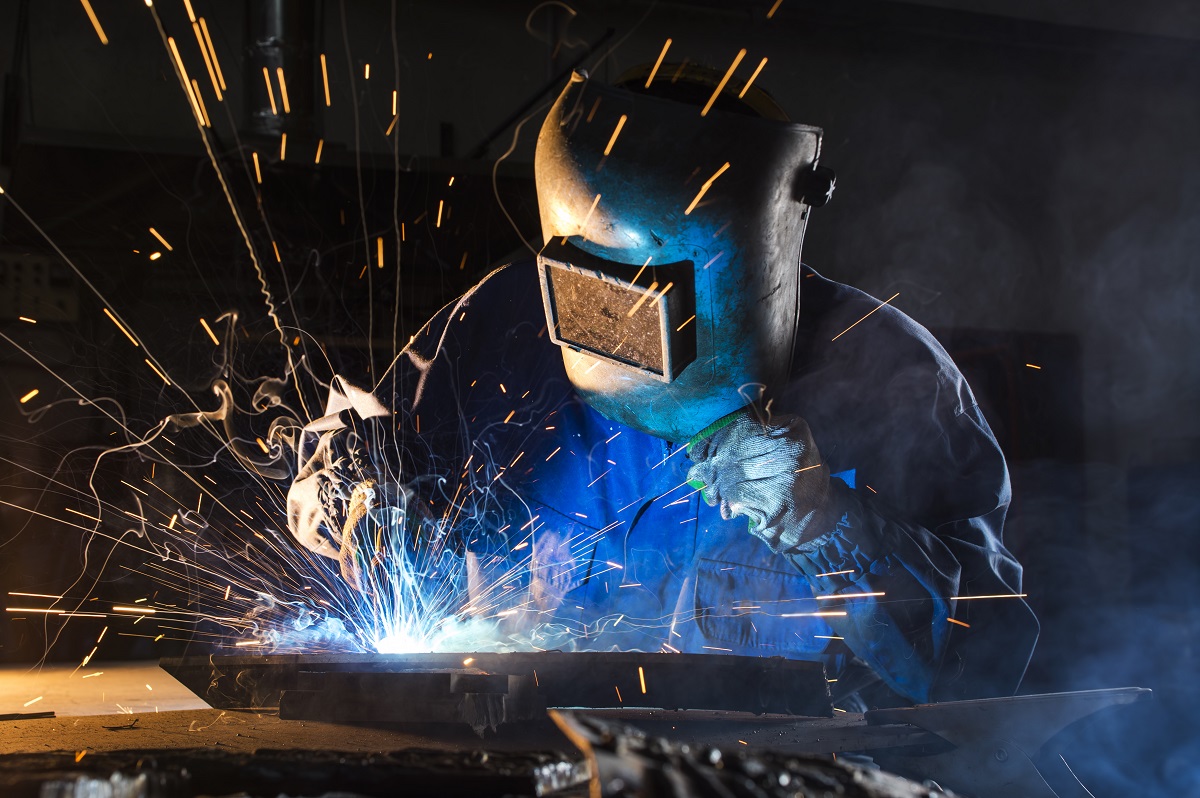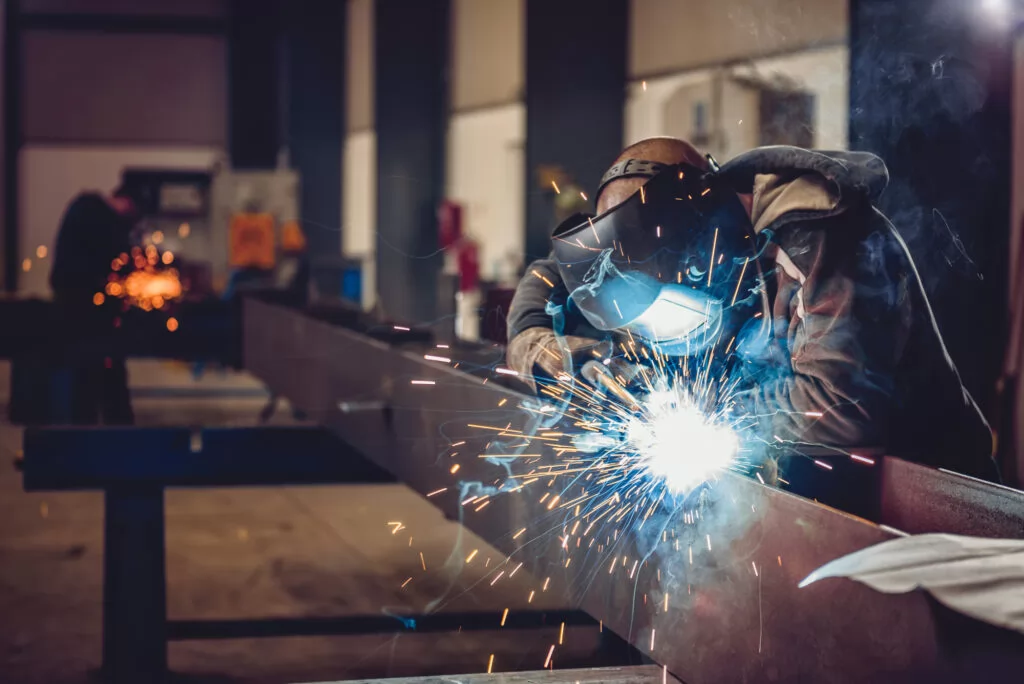Usual Welding Fixing Issues and Exactly How to Address Them Properly
Welding repairs frequently run into an array of problems that can jeopardize the integrity of the last product. Common troubles consist of poor penetration, porosity, and misalignment, to name a few. Each flaw offers special difficulties that need particular strategies for resolution. Comprehending these issues is important for welders aiming to boost their abilities and end results. This discussion will certainly check out these typical welding repair service issues and efficient methods to resolve them.
Insufficient Penetration
Inadequate infiltration takes place when the weld metal falls short to completely fuse with the base product, leading to weak joints and prospective architectural failures. This problem commonly originates from not enough heat input, incorrect electrode angle, or incorrect welding speed. Welders may run into insufficient penetration because of a mistake of the needed criteria for a details material density or type. In addition, contamination on the base product's surface can impede reliable bonding, worsening the issue. To address poor penetration, welders need to ensure ideal setups on their tools and maintain a clean job surface area. Routine inspection of welds is suggested to identify any kind of deficiencies early, permitting prompt improvements and the prevention of compromised architectural integrity in welded settings up.
Porosity
Porosity is an usual defect in welded joints that shows up as tiny gas bubbles trapped within the weld metal. This defect can jeopardize the honesty of the weld, leading to minimized toughness and possible failure under stress and anxiety. Belgrade. Porosity generally emerges from contamination, dampness, or improper welding methods, which enable gases to leave right into the liquified weld swimming pool. To resolve porosity, welders need to ensure appropriate surface area prep work, keep a clean functioning setting, and make use of appropriate welding specifications. Additionally, selecting the best filler product and securing gas can alleviate gas entrapment. Normal examination and testing of welds can help identify porosity early, guaranteeing timely restorative actions are taken, thus protecting the top quality and reliability of the bonded framework
Misalignment
Imbalance in welding can occur from different elements, consisting of inappropriate arrangement and thermal development. Comprehending the origin triggers is important for efficient resolution. Numerous adjustment methods are offered to realign parts and ensure structural stability.
Reasons of Imbalance
Welding misalignment usually stems from a range of underlying concerns that can jeopardize architectural stability. One main cause is inappropriate fit-up of elements prior to welding, which can bring about spaces and uneven surface areas. Variants in thermal development during the welding process can also result in distortion, particularly if the materials being joined have different coefficients of expansion. In addition, insufficient clamping and fixturing might fail to hold components securely in area, bring about motion throughout welding. Improperly maintained devices, consisting of welding equipments and tools, might introduce inconsistencies in the weld bead, additional adding to imbalance. Operator error, stemming from not enough training or experience, can additionally play a significant function in producing misaligned welds.

Adjustment Techniques Readily Available
Attending to misalignment successfully needs a mix of corrective strategies customized to the certain concerns handy. One usual technique is the use of components or jigs to hold elements in the correct placement throughout welding, guaranteeing consistent placement. In addition, preheating the materials can help in reducing distortion and enhance fit-up. For considerable misalignment, mechanical realignment strategies, such as using hydraulic jacks or clamps, can be utilized to fix the placement before welding. Post-weld heat therapy might also be necessary to ease anxieties brought on by misalignment. Cautious inspection and change throughout the arrangement phase can avoid misalignment issues from coming to be substantial issues, advertising a smoother welding process and improving overall architectural stability.
Distortion
Distortion is a common obstacle in welding that can emerge from numerous variables, including unequal heating & cooling. Understanding the root causes of distortion is vital for executing reliable prevention methods. Addressing this problem not only enhances structural integrity but likewise enhances the general high quality of the weld.
Root causes of Distortion
When based on the intense heat of welding, products often undertake adjustments that can result in distortion. This sensation primarily develops from thermal growth and contraction throughout the welding procedure. As the weld location warms up, the material increases; upon cooling, it acquires, which can create internal anxieties. In addition, irregular heating throughout a work surface can exacerbate these stresses, resulting in warping or flexing. The sort of product likewise plays a significant role; steels with differing thermal conductivity and coefficients of growth may respond in different ways, bring about unforeseeable distortions. Additionally, inadequate joint style and insufficient fixturing can add to misalignment during welding, enhancing the chance of distortion. Recognizing these causes is crucial for efficient welding repair work and prevention techniques.
Prevention Techniques
Efficient avoidance strategies for distortion throughout welding concentrate on managing heat input and making certain appropriate joint layout. Preserving a constant warm input assists to decrease thermal development and contraction, which can result in distortion. Using strategies such as preheating my latest blog post the workpiece can also lower the temperature gradient, advertising consistent home heating. Additionally, picking ideal joint designs, such as T-joints or lap joints, can enhance security and reduce tension focus. Implementing proper fixturing to safeguard the work surfaces in place better aids in maintaining alignment throughout the welding procedure. Finally, staggered welding sequences can distribute heat more uniformly, protecting against localized distortion. By applying these strategies, welders can greatly decrease the likelihood of distortion and improve the overall high quality of their welds.
Breaking
Cracking is a typical problem run into in welding repair services, usually resulting from different elements such as improper air conditioning prices, product choice, or poor joint preparation. The incident of cracks can greatly jeopardize the honesty of the weld, causing potential failures throughout operation. To address this problem, welders need to first analyze the origin, making certain that materials are compatible and appropriately picked for the specific application. Additionally, regulating the air conditioning rate throughout the welding procedure is crucial; fast air conditioning can induce stress and anxiety and cause splitting. Appropriate joint design and prep work additionally add to decreasing the danger. Executing these methods can improve weld high quality and sturdiness, eventually minimizing the chance of splitting in completed weldments.

Insufficient Blend
A significant issue in welding repair work is incomplete blend, which happens when the weld steel does not effectively bond with the base material or previous weld passes - Fabrication. This issue can cause weaknesses in the joint, possibly compromising the integrity of the welded structure. Elements adding to insufficient fusion include inadequate heat input, incorrect welding strategy, and contamination of the surfaces being signed up with. To resolve this concern effectively, welding hoods for sale welders ought to assure proper pre-weld cleaning and surface prep work, along with readjust their welding criteria to achieve appropriate penetration and combination. Regular inspection throughout the welding process can also help identify incomplete fusion early, permitting prompt restorative actions to boost the total quality of the weld
Overheating
While welding fixings can boost architectural stability, overheating presents a considerable obstacle that can cause material destruction. Excessive warm during welding can change the mechanical residential or commercial properties of metals, causing decreased strength, increased brittleness, and warping. This phenomenon is especially critical in high-stress applications where architectural dependability is critical. Identifying overheating can involve visual assessments for staining or distortion, in addition to checking temperature level during the welding procedure. To mitigate the risks associated with overheating, welders should employ appropriate strategies, such as regulating warm input, changing travel rate, and making use of appropriate filler materials. Furthermore, executing pre- and post-weld heat treatments can assist recover product homes and improve the overall high quality of the repair work, ensuring lasting performance and safety.
Frequently Asked Concerns
What Are the Usual Indications of a Welding Problem?

How Can I Examine My Welds for Quality?
To test welds for quality, one can utilize aesthetic evaluations, ultrasonic testing, and radiographic techniques. Each strategy assures architectural honesty, determines issues, and verifies adherence to specified requirements, inevitably improving the reliability of the bonded joints.
What Security Preventative Measures Should I Take While Welding?
When welding, one must prioritize safety by putting on suitable personal safety tools, making certain correct air flow, protecting combustible materials away, preserving a tidy work space, and recognizing environments to stop accidents and injuries.
Can I Fix a Weld Without Redesigning the Entire Joint?
Fixing a weld without renovating the whole joint is possible, depending on the damages (Montana Mobile Welding and Repair Belgrade Fabrication). Strategies such as grinding, adding filler product, or utilizing a welding process can properly address particular flaws while protecting the surrounding framework
What Equipment Are Essential for Efficient Welding Fixes?
Essential tools for effective welding fixings include a welding machine, cable brush, grinder, safety equipment, clamps, and filler products. Each tool plays a vital duty in guaranteeing high quality and safety and security throughout the repair process. Porosity usually occurs from contamination, dampness, or improper welding methods, which enable gases to escape into Bonuses the liquified weld swimming pool. Badly conserved tools, including welding makers and devices, may present inconsistencies in the weld bead, additional adding to imbalance. When subjected to the intense warm of welding, products often go through modifications that can lead to distortion. Splitting is an usual issue come across in welding repair services, often resulting from different variables such as improper cooling prices, product selection, or poor joint preparation. A significant issue in welding repair services is incomplete combination, which takes place when the weld steel does not appropriately bond with the base material or previous weld passes.
Comments on “Breaking down cracking in welds and how Montana Mobile Welding and Repair Belgrade Welding manages it”